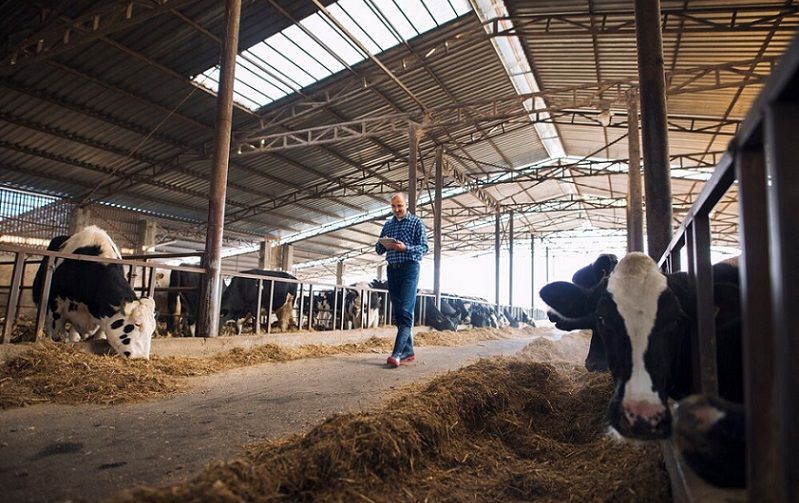New Zealand Dairy Farmers See Record Gains as Forecast Payout Climbs
Source: DairyNews.today
New Zealand dairy farmers are poised to benefit from a significant financial boost this season, with higher forecast payouts and reduced interest costs driving substantial increases in cash surpluses, according to industry group DairyNZ.

Record Payouts Expected
DairyNZ projects an average payout of $10.08 per kilogram of milk solids (kgMS) for the current season, well above the national breakeven price of $8.32 per kgMS. This $1.76 margin marks one of the strongest profit levels in recent years, said DairyNZ’s Head of Economics Mark Storey.
“That’s potentially $1.76 of cream on top for farmers, providing a welcome relief after tighter margins in past seasons,” Storey said.
This follows Fonterra’s upward revision of its farmgate milk price range to $9.50–$10.50 per kgMS, with a midpoint of $10.00, which would set a new record. Fonterra’s current record is $9.30, achieved during the 2021-22 season. The cooperative also reaffirmed its 40–60 cents per share earnings forecast for the financial year.
Improved Financial Outlook
DairyNZ estimates a 164-hectare farm milking 454 cows will generate nearly $1.95 million in net dairy income this season, up from $1.55 million last year.
Cash Operating Surplus: Expected to rise to $938,000 from $587,000 last year.
Discretionary Cash: Projected at $540,000, up from $219,000.
Cash Surplus: Anticipated at just under $113,000, reversing last year’s $8,500 deficit.
DairyNZ attributes the gains to higher GlobalDairyTrade prices, steady demand across dairy categories, and lower interest rates stemming from reductions in New Zealand’s Official Cash Rate (OCR).
“Farmers are seeing the benefits of strong international demand and financial relief from reduced borrowing costs,” Storey noted. “These factors, coupled with relatively stable farm working expenses, are driving profitability.”
Operating Costs Stable, but Marginally Higher
Farm working expenses are forecast to rise 4% this season, reflecting modest increases in key operational costs such as wages, electricity, and insurance. Some of this uptick is attributed to deferred repairs and maintenance that farmers delayed during leaner seasons.
“Despite these increases, the financial outlook remains robust,” Storey said. “Farmers are in a better position to reduce debt, reinvest in their operations, or address capital needs.”
Broader Impacts on the Sector
DairyNZ’s Econ Tracker Tool highlights the sector’s improving financial health, providing detailed metrics to help farmers make informed decisions.
Since June, the average national forecast payout has risen by 21%, while breakeven prices have increased by just 3%, reflecting stable costs relative to income.
“This season’s gains are a testament to the resilience of New Zealand’s dairy sector,” Storey said. “The improved cash flow not only strengthens individual farm operations but also contributes to the broader rural economy.”
Looking Ahead
While the current season’s outlook is positive, DairyNZ cautions that global market volatility and operational cost pressures remain challenges. Nonetheless, with improved margins and increased liquidity, New Zealand’s dairy farmers are better equipped to weather uncertainties and pursue sustainable growth.
“This is a turning point for many farms, enabling long-term planning and investment,” Storey concluded.
DairyNZ projects an average payout of $10.08 per kilogram of milk solids (kgMS) for the current season, well above the national breakeven price of $8.32 per kgMS. This $1.76 margin marks one of the strongest profit levels in recent years, said DairyNZ’s Head of Economics Mark Storey.
“That’s potentially $1.76 of cream on top for farmers, providing a welcome relief after tighter margins in past seasons,” Storey said.
This follows Fonterra’s upward revision of its farmgate milk price range to $9.50–$10.50 per kgMS, with a midpoint of $10.00, which would set a new record. Fonterra’s current record is $9.30, achieved during the 2021-22 season. The cooperative also reaffirmed its 40–60 cents per share earnings forecast for the financial year.
Improved Financial Outlook
DairyNZ estimates a 164-hectare farm milking 454 cows will generate nearly $1.95 million in net dairy income this season, up from $1.55 million last year.
Cash Operating Surplus: Expected to rise to $938,000 from $587,000 last year.
Discretionary Cash: Projected at $540,000, up from $219,000.
Cash Surplus: Anticipated at just under $113,000, reversing last year’s $8,500 deficit.
DairyNZ attributes the gains to higher GlobalDairyTrade prices, steady demand across dairy categories, and lower interest rates stemming from reductions in New Zealand’s Official Cash Rate (OCR).
“Farmers are seeing the benefits of strong international demand and financial relief from reduced borrowing costs,” Storey noted. “These factors, coupled with relatively stable farm working expenses, are driving profitability.”
Operating Costs Stable, but Marginally Higher
Farm working expenses are forecast to rise 4% this season, reflecting modest increases in key operational costs such as wages, electricity, and insurance. Some of this uptick is attributed to deferred repairs and maintenance that farmers delayed during leaner seasons.
“Despite these increases, the financial outlook remains robust,” Storey said. “Farmers are in a better position to reduce debt, reinvest in their operations, or address capital needs.”
Broader Impacts on the Sector
DairyNZ’s Econ Tracker Tool highlights the sector’s improving financial health, providing detailed metrics to help farmers make informed decisions.
Since June, the average national forecast payout has risen by 21%, while breakeven prices have increased by just 3%, reflecting stable costs relative to income.
“This season’s gains are a testament to the resilience of New Zealand’s dairy sector,” Storey said. “The improved cash flow not only strengthens individual farm operations but also contributes to the broader rural economy.”
Looking Ahead
While the current season’s outlook is positive, DairyNZ cautions that global market volatility and operational cost pressures remain challenges. Nonetheless, with improved margins and increased liquidity, New Zealand’s dairy farmers are better equipped to weather uncertainties and pursue sustainable growth.
“This is a turning point for many farms, enabling long-term planning and investment,” Storey concluded.
Key News of the Week











